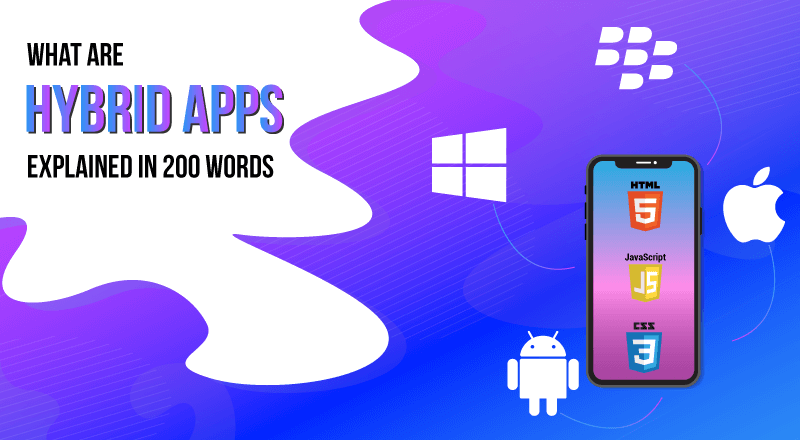

November 15, 2019
June 29th, 2023
Like native apps, hybrid apps run on the device.
They are similar to native apps but built with web technologies like HTML, CSS, and JavaScript. We can also say a hybrid app is a web app, wrapped in a native container.
It’s a union of web and mobile technologies.
To use platform independency and access mobile device’s features, hybrid apps are wrapped in native containers using solutions like Apache Cordova (PhoneGap) or frameworks like Ionic.
It can be installed and downloaded from app stores just like native apps.
This approach to mobile app development has gained significant popularity as it allows developers to build a single code that can be used for multiple platforms.

It runs inside a native container on a mobile device.
Hybrid apps are a good option when you need to target multiple platforms and time and budget are constraints.
Highlights:
Limitations:
Some examples of hybrid apps are Instagram, Evernote, JustWatch, Twitter, Gmail, and many more.
A Good Read: PWA vs Native App vs Cross Platform vs Hybrid App
SPEC INDIA is your trusted partner for AI-driven software solutions, with proven expertise in digital transformation and innovative technology services. We deliver secure, reliable, and high-quality IT solutions to clients worldwide. As an ISO/IEC 27001:2022 certified company, we follow the highest standards for data security and quality. Our team applies proven project management methods, flexible engagement models, and modern infrastructure to deliver outstanding results. With skilled professionals and years of experience, we turn ideas into impactful solutions that drive business growth.
SPEC House, Parth Complex, Near Swastik Cross Roads, Navarangpura, Ahmedabad 380009, INDIA.
This website uses cookies to ensure you get the best experience on our website. Read Spec India’s Privacy Policy